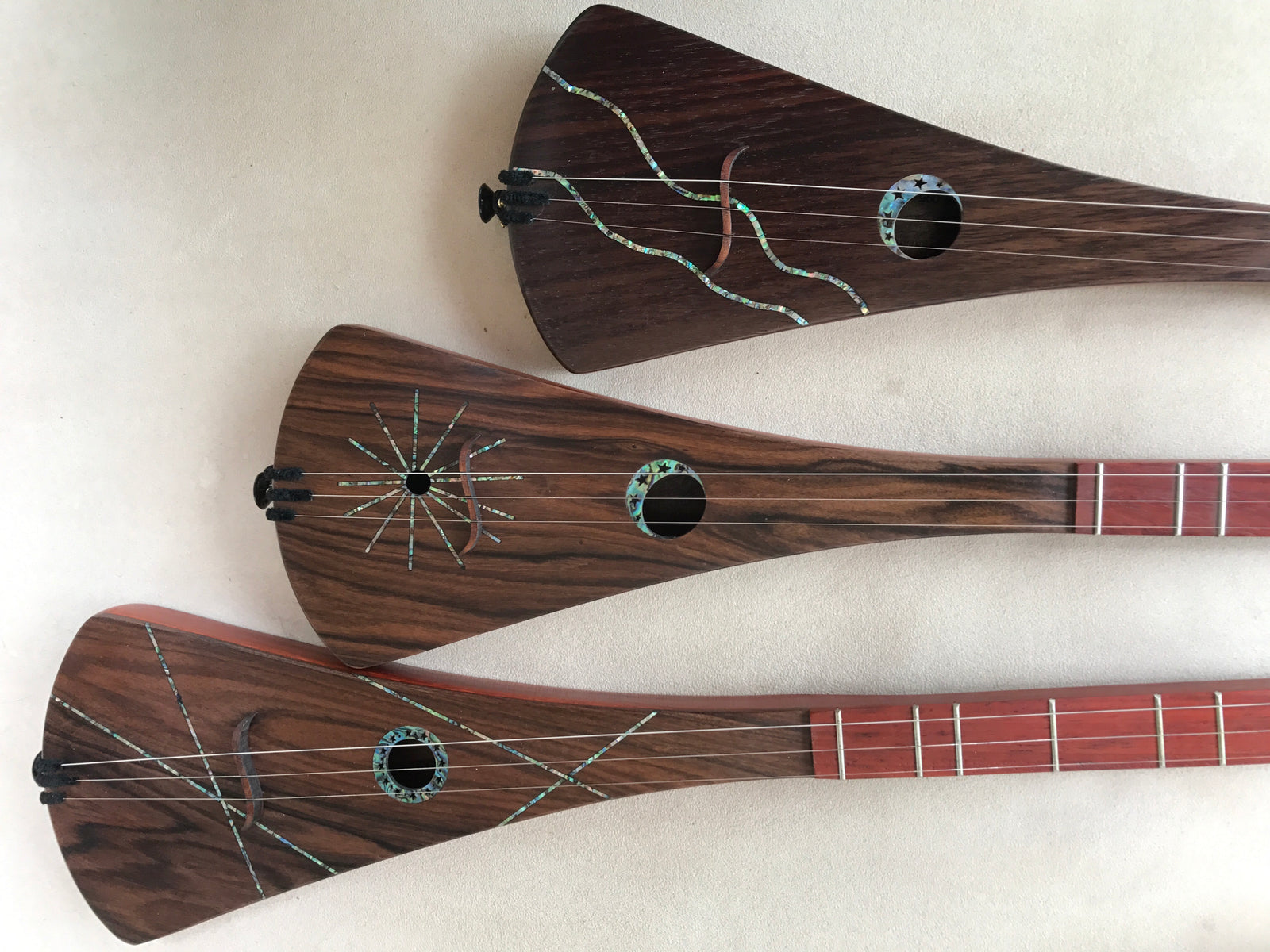Recording is a broad subject. Here we will address some things you can do to start, and some aspects of using the Strumstick in recording.
1. Use your Phone
Most smart phones have a voice memo (audio recording) function, and can make videos with audio. Set your phone up somewhere pointed at you, not too far away, click video record (or voice memo record), and strum away at something you like to play. See all the suggestions below, and also see Playing along withYourself for ideas about playing along with yourself on recordings.
If you think you would like to play along with the recording after its done, give yourself a count in "one two three four" as you start. Yes you will feel silly.
You will quickly find that how the Strumstick sounds depends on how loud you play (too loud/too soft?), how near the phone is and how much background noise there is (Oops! the dishwasher was on).
Oh, and its a given, you probably wont like how you sound. Nobody likes how they sound on recordings. John Lennon went to extraordinary lengths to not sound like himself in later Beatle recordings; what chance do mere mortals have? Its ok, you are not making an album (unless you are).
Recordings help you hear what you are doing when you are not distracted by doing it. Recording actually makes you play worse than you can (the pressure of performance). Thats actually great news... it's one of the best ways to get used to playing in front of (and along with) others. It's a learning process almost every musician goes through.
2. Record on Computer (or a modestly priced digital Porta-Studio).
Get a decent mic, an "audio interface", some audio software, and record on your computer (or tablet). Instead of just one part being recorded, Multi-track recording lets you record one part, then record another (and another and...) while you listen to the first one. The internet is filled with advice on all this, do your homework. Garageband (Apple) and equivalent recording applications are hugely capable recording devices. There are also basic multitrack recording apps for phones, too. You can even brute force your way with two phones or tablets, see Making Strumstick Multi-part Recordings and Recording, Plus Live
I know musicians who knew nothing about recording at the start of the pandemic, and a year later were polishing up self-produced albums. It's all learnable and you can always erase your mistakes and do it again.
3. Got a Cheap Cassette Recorder?
Lo-fi is getting popular again.
4. Tone. Strumstick is a bright instrument, mostly in the upper mid and upper frequency ranges. It can sound harsh on recordings with uncontrolled loud strumming. Develop a little delicacy of touch and strum close to where fingerboard meets the body. Strumming over the soundhole (that is, nearer to the bridge) brightens the sound and decreases warmth. You can tailor your tone by where you strum, how hard you strum, how stiff your pick is, and even the angle at which the pick crosses the strings.
The position of the mic (either an external mic or the mic in your phone) affects how bright or warm the sound is too; how near/distant, straight in front or off to the side, near the soundhole or closer to the big end area of the soundboard. Experiment if you are fussy.
The Strumstick has a great distinctive tone...a little like banjo. a little mandolin, a little dulcimer, and its own mojo. It makes a wonderful color instrument along with others, and has a unique sound when by itself (listen to some of Tracey Chapman's use of it on some of her middle-early albums, or Jon Anderson's current use of it). If recording with editing capabilities, rolling off (reducing) the treble somewhat, and increasing the low and low mid-frequencies can make it more present.
Because the Strumstick is mid to high range, it works great with many effects devices, like delay, reverb, chorus, etc. Believe it or not, its a great driver of overdrive or distortion pedals; the absence of lower frequencies and being only three strings keeps it from being muddy, and the high overtones are just what makes overdrive sing. Delay effects are particularly cool with strumstick. Because so much of what is played on it involves drone strings, the drone "stabilizes" the fleeting dissonances that adjacent notes can make with delay, and the delay adds space and body to the Strumstick sound. See some of the Quick Bites electronic effects videos.
Strumstick with Pickup and Electronic Effects
Delay #1 Delay effects with Strumstick-with pickup
Delay #2 Arpeggios (with and without Delay)-with pickup
Delay #3 Delay with Multiple Repeats-with pickup
Delay #4 Fingerpicking (with and without Delay)-with pickup
Power Chords Part 1 Demo-with pickup
Power Chords Part 2 How to-with pickup
Power Chords Part 3 Fingerings-with pickup
See these Strumstick Blog Articles for more ideas.
Making Strumstick Multi-part Recordings(blog article)
Recording, Plus Live example (excerpt from blog)
Playing With a Click track (or a recorded part) (blog article)
Sales, New Products, Instructions, Videos, and Free Offers, Useful Content.
